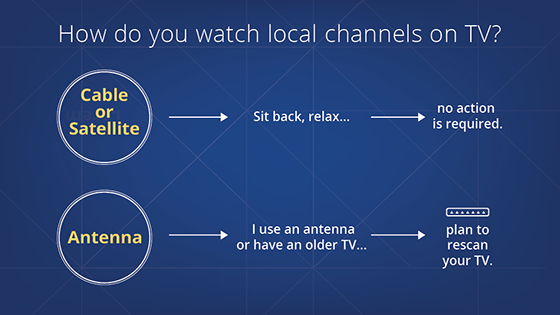Apollo Group Tv Fundamentals Explained
Apollo Group Tv Fundamentals Explained
Blog Article
How Apollo Group Tv can Save You Time, Stress, and Money.
Table of ContentsThe smart Trick of Apollo Group Tv That Nobody is Talking AboutNot known Factual Statements About Apollo Group Tv Apollo Group Tv - The FactsGetting My Apollo Group Tv To Work
In this situation, as opposed to having three-minute industrial areas during a 30-minute television program, television programs might transform to one where a consumer will be required to have a month-to-month registration, to ensure that they cen sight targeted banner ads. This sort of advertising already takes place on the net, and the amount of information tv business gather allows them to do similar.Define the significant patterns among the broadcasting and wire networks. Popular radio shows such as authorities drama Dragnet and western cowboy series Gunsmoke were adjusted for television, and new TV programs were sponsored by single advertisers, simply as radio programs had been.
Today, the television sector is much more intricate. Programs are funded by numerous marketers; shows is controlled by major media corporations; and the 3 significant networks no longer control the airwaves however instead share their audiences with numerous cable television channels. Numerous aspects represent these trends within the sector, consisting of technological growths, federal government guidelines, and the development of brand-new networks.

The Definitive Guide to Apollo Group Tv
Even public television has actually come to be based on the impact of advertising and marketing. Developed in 1969, (PBS) established out of a record by the Carnegie Compensation on Educational Tv, which took a look at the function of educational, noncommercial television on culture. The record advised that the government finance public television in order to offer variety of programs throughout the network eraa solution created "not to market products" but to "boost citizenship and public service (McCauley, 2003)." Public tv was additionally intended to give global accessibility to television for audiences in backwoods or audiences that might not afford to pay for private television services.
The period between 1950 and 1970 is historically recognized as the. Besides a little section of airtime managed by public tv, the three major networks (called the Big Three) dominated the tv market, jointly representing even more than 95 percent of prime-time viewing. In 1986, Rupert Murdoch, the head of multinational business News Corp, launched the Fox network, challenging the prominence of the Big 3.
Targeting young and minority target markets with programs such as Buffy the Vampire Slayer, Moesha, Dawson's Creek, and The Wayans Bros., the brand-new networks wanted to attract stations away from their old network affiliations. However, instead than duplicating the success of Fox, UPN and WB battled to make an influence. Unable to draw in many affiliate terminals, both fledgling networks reached less houses than their bigger competitors due to the fact that they were impossible in some smaller sized cities.
This choice led the way for the development of cable television motion picture channels, adding to the exponential growth of cable in the 1980s and 1990s. apollo tv group. Additional deregulation of cable in the 1984 Wire Communications Plan Act removed constraints on cable rates, making it possible for operators to charge what they desired for cable television solutions as long as there was efficient competition to the solution (a standard that over 90 percent of all cable television markets could satisfy)
Apollo Group Tv Things To Know Before You Get This

Having created the initial "superstation," Turner broadened his world by establishing 24-hour news network CNN in 1980. At the end of the year, 28 national programming services were offered, and the wire change had started. Over the next years, the market underwent a period of quick growth and popularity, and by 1994 viewers can pick from 94 basic and 20 costs cable television solutions.
Figure 9 - https://vickboyd3319.wixsite.com/apollo-group-tv/post/a-comprehensive-guide-to-the-apollo-group-tv-app-your-ultimate-streaming-solution.16 Boosted competitors from cord channels has actually caused a consistent decrease in the networks' audience ratings. During the 1950s, the price of generating a single television program raised as shows came to be longer and production expenses skyrocketed. Sponsorship on network tv changed from single sponsorship, in which a program was totally sustained and produced by one marketer, to several sponsorship, in which marketers bought 1- or 2-minute spots on the program
Select one of the Big 4 networks and print out its weekly programs routine. Enjoy the network's prime-time programs over the training course of a week, keeping in mind the target group for each program.
A Biased View of Apollo Group Tv

Linear Television, commonly referred to as traditional broadcast Television, incorporates cable and satellite tv., assume of it as the timeless way of watching TV that has been around for decades.
Report this page